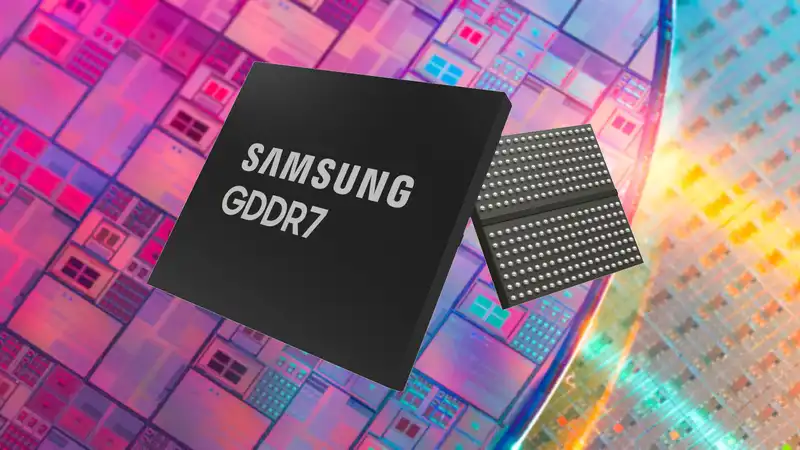As for the graphics card, a significant portion of its performance comes from the onboard VRAM. Not only does this memory have to store large amounts of data for rendering and computation, but it also needs to be able to transfer data at very high speeds. JEDEC, a semiconductor standards organization, has finalized the specifications for GDDR7, the next generation of ultra-fast video RAM with twice the bandwidth of GDDR6.
News of the specification approval (via TechPowerUp) has been received favorably, and for good reason. At this point, if you want the fastest VRAM, you can either buy Samsung's 24 Gbps GDDR6 or Micron's (the only company that manufactures this type of memory) 24 Gbps GDDR6X.
GDDR7 pushes them all away because it can reach 32 Gbps and will eventually probably be even faster. To give you an idea of what this actually means, the Radeon RX 7900 XTX uses 20 Gbps GDDR6 for a total bandwidth of 960 GB/s. If this is replaced with GDDR7, the maximum is 1,536 GB/sec. [This higher speed is achieved by using a type of signal called PAM-3 (pulse amplitude modulation, level 3), which transmits three bits of data every two clock cycles; GDDR6 uses a method called NRZ (none-return-to-zero), which transmits one bit every cycle. The new RAM transfers 50% more data per clock cycle
.
This is a similar mechanism to that used in Micron's GDDR6X (exclusively used by Nvidia), which uses PAM-4 signaling, 2 bits per cycle The reason GDDR7 does not use PAM-4 is simplicity and cost. Better systems require tighter electrical tolerances, which makes them more expensive to manufacture and the graphics cards that use them more expensive. [GDDR7 can switch between PAM-3 and NRZ depending on the load. When overwhelming performance is required, PAM-3 is activated, but in situations where reducing energy consumption is important (such as non-gaming desktop applications), NRZ is activated to keep things cool. [The new VRAM specification also increases the bit density of memory modules; GDDR6 is limited to 16Gb (2GB) per chip, but JEDEC has approved support for densities up to 32Gb, making clamshell mode available again. In layman's terms, a graphics card with a 128-bit memory bus could theoretically have 32GB of VRAM.
We do not expect full-fledged 32Gbps, 32Gb GDDR7 modules to be used in graphics cards anytime soon, as it will take time for Samsung, Micron, and SK Hynix to refine and ramp up production. However, since it will still take time for Samsung, Micron, and SK Hynix to refine and ramp up production, perhaps the first modules we will get will be around 28-30 Gbps but with 16Gb density. In other words, the next generation of GPUs will have about 25% faster VRAM, but no greater storage capacity.
As for which GPU vendor will jump on the GDDR7 bandwagon first, I suspect it will be Nvidia, although there is a slight chance that AMD will get there first if they launch RDNA 4 before the consumer version of Blackwell hits store shelves. I am guessing. However, GDDR7 is likely to be quite expensive to begin with, and AMD will probably stick with GDDR6 as it is more committed to the mainstream sector for the upcoming Radeon.
Regardless of what ultimately happens, the first vendor to bring a GDDR7-equipped graphics card to market is going to be in a big hurry.


Comments